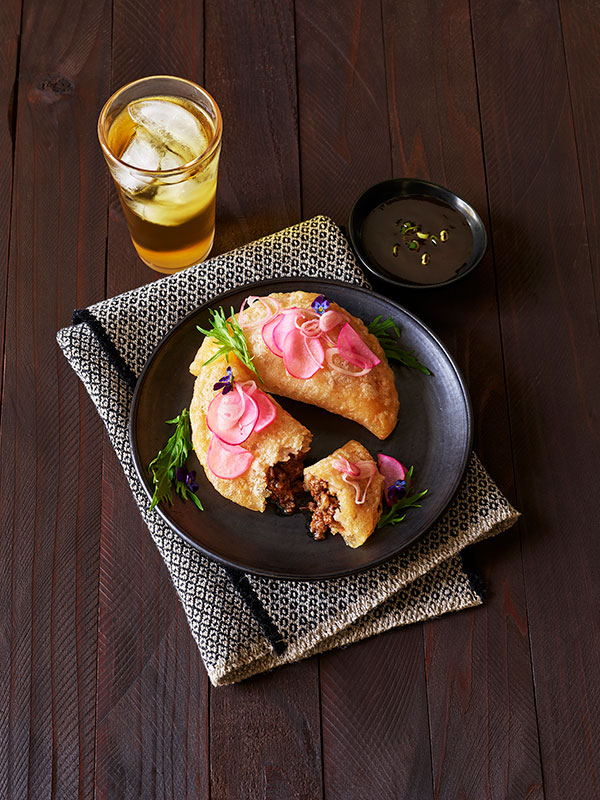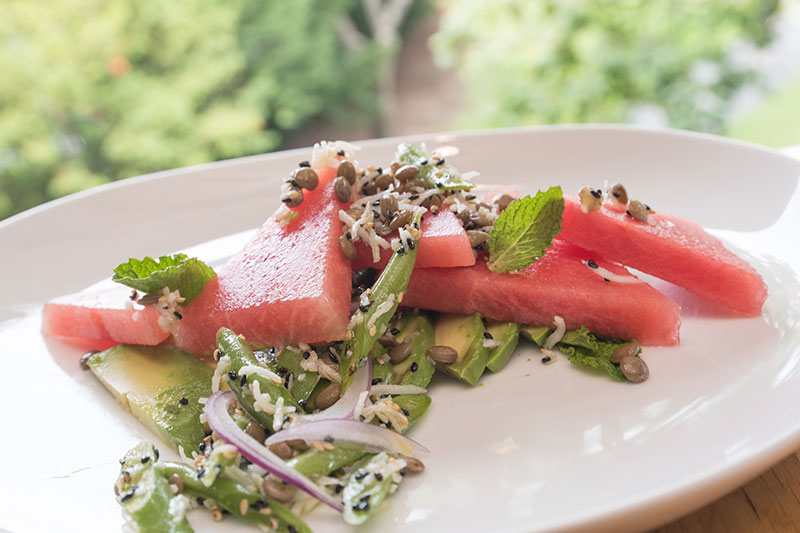
Using Traditional Asian Flavors Untraditionally
07 February 2020Blending Asian ingredients into traditional applications to meld with and deepen inherent flavors.
By Lisa Parrish, GMC Editor
 What comes to mind when you think of Asian flavors? Do you think of ingredients such as galangal, lemongrass, Thai basil, soy sauce or fish flavorings? Do applications such as beef curry, steamed dumplings or Ma Po Tofu come to your attention?
What comes to mind when you think of Asian flavors? Do you think of ingredients such as galangal, lemongrass, Thai basil, soy sauce or fish flavorings? Do applications such as beef curry, steamed dumplings or Ma Po Tofu come to your attention?
The variety of Asian flavors and ingredients vary as much as the region’s geography. Consider Asian cuisine covers countries from Japan to Mongolia to Indonesia. Instead of focusing on Asian applications, let’s shine a light on Asian ingredients in everyday, traditional USA dishes.
Chefs tend to think of four basic flavor profiles: sweet, sour, bitter and salty. Umami is known as the fifth flavor and is the secret weapon of cooks looking to add flavor intensity to all kinds of dishes. Soy sauce is one of the world’s oldest sources of umami.
Using soy sauce as a flavoring agent in non-traditional applications – or those not in the Asian style of cooking - requires balancing the meaty umami with complementary flavors. In most cases, especially when creating non-traditional Asian applications, chefs want the soy sauce flavor to remain in the background, so its salty, sweet, and meaty qualities are perceived without identifying a pronounced soy sauce taste.
Soy sauce is a similar flavoring agent to salt or pepper, with cooks utilizing the product until flavors meld and are just right. For example, you can use soy sauce instead of salt when blanching vegetables, which will deepen the vegetables’ flavors.
A hint about soy sauces: Not all sauces are made the same way and therefore the umami tastes can vary from very sharp and bitter to smooth and bold. Traditionally brewed soy sauce, such as Kikkoman, offers complex flavor components that allow for its applications to stretch far beyond sushi or Chinese take-out condiments. In comparison, you’ll find non-brewed soy sauce has an overpowering flavor that provides a noticeably Asian flavor.
Here are a few examples of how to use Asian flavorings in applications that are distinctly-not Asian.
Adding flavor intensity: Chef Francis Ang of Pinoy Heritage in San Francisco uses Kikkoman Soy Sauce in his Lamb Adobo Empanadas to intensify the flavor of the lamb while searing.
Creating twists on breakfast staples: Kao Yuk Soy braised pork belly hash from Chef Lien Li of Bricolage in New York City, is a perfect example of pushing the boundaries of Asian flavors by incorporating into a trendy breakfast dish.
“Steak” sauce variations:
- Use Asian flavors on non-traditional dishes like a teppan-seared cauliflower steak.
- Click here to learn how to create a “steak” sauce that unconventionally retains the umami flavor and goes beyond Asian-style cooking.
Developing fermented flavors:
- Fermented foods like pickles and sauerkraut are classic to the roots of how we think of hot dogs and brats, says Angela Serna, Marketing Manager for the National Mango Board. Korean kimchi was a natural choice for inspiration and the tropical sweet and sour flavor notes from fresh mango in kimchi makes a delicious pairing with the hearty flavor of brats.
- StarChefs Rising Star, Chef Brad Deboy of Elle in Washington DC, uses Kikkoman Soy Sauce to develop the fermented flavors in his grilled kimchi toast.
- Chef Brad Deboy has experimented with fermentation for almost 15 years and uses Kikkoman Soy Sauce on aged, cured, and dry root vegetables to taste like meat, and bring out umami flavors.
Salads to fries - untraditionally:
-
CIA Chef Rebecca Peizer created a Burmese watermelon salad that is packed with texture and combines flavors of Southeast Asia, Thailand, Vietnam and India. Cubes of juicy and crisp watermelon are tossed with shredded coconut, toasted peanuts, sesame seeds, lentils, green beans, kaffir lime leaves, mint and a soy dressing.
- Marry Asian and Latin flavors with the right balance of umami and citrus notes, perfect for fusion tacos or adding a flavorful kick to ceviche
- Kimchi loaded fries
- Sushi burritos
Click here to visit Kikkomanusa for more information about using Asian flavors untraditionally.
Photo credits: Kikkoman and Culinary Institute of America
